Reef cubes provide diverse UK marine habitats
Accelerating Reef creation at UK Aquaculture site in just 12 months
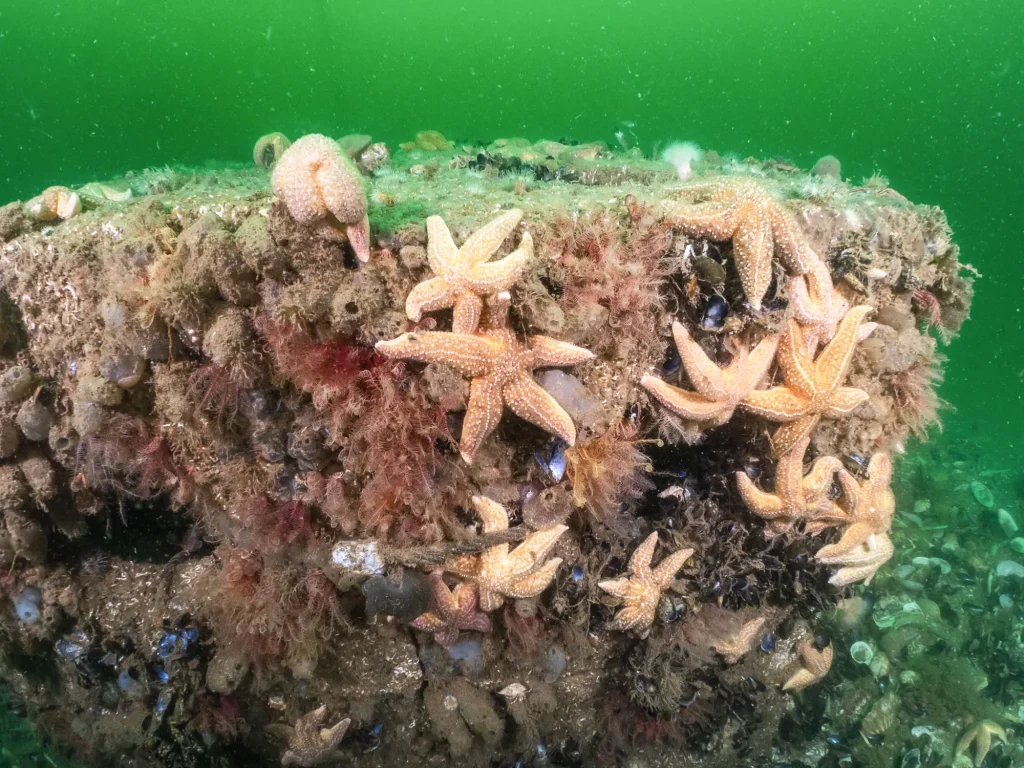
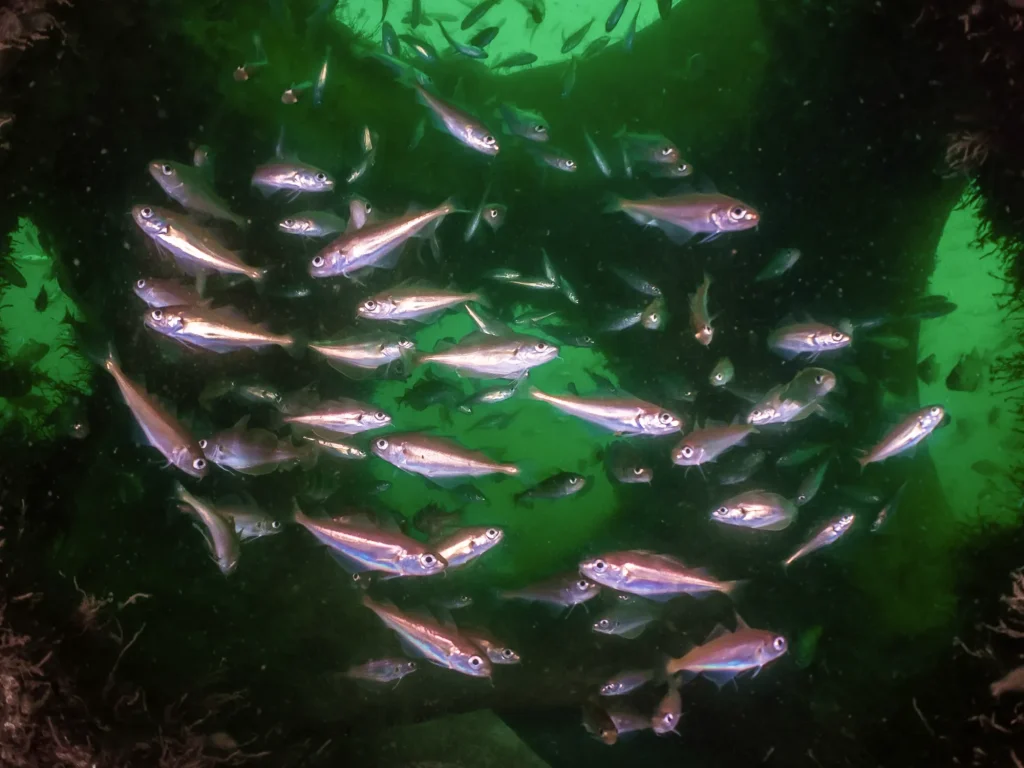
Challenge
Biodiversity is declining across the globe with a 69% decrease of global wildlife populations on average since 1970. A contributing factor to this is the mass alteration of sea floor habitats and the industrial over-extraction of fishery resources.
While construction in the marine environment has historically paved over marine habitats with a high carbon footprint, our low carbon Reef cubes offer a way to restore marine biodiversity. They create habitat enhancing artificial reefs that can help organisations to meet their rapidly evolving environmental targets.
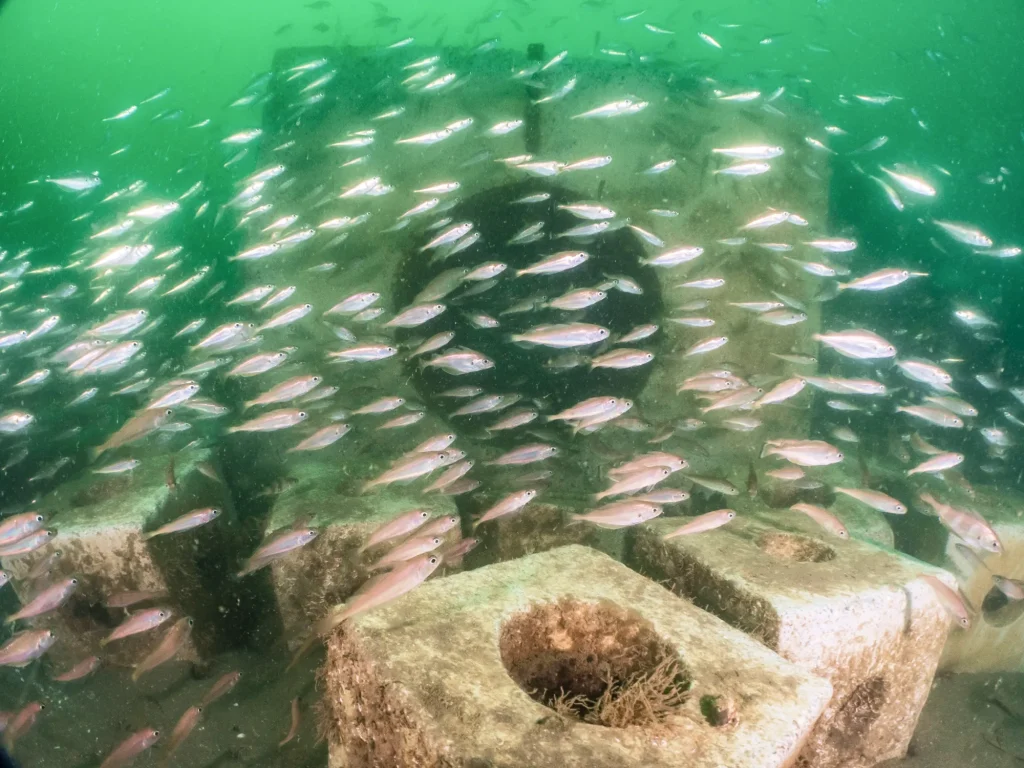
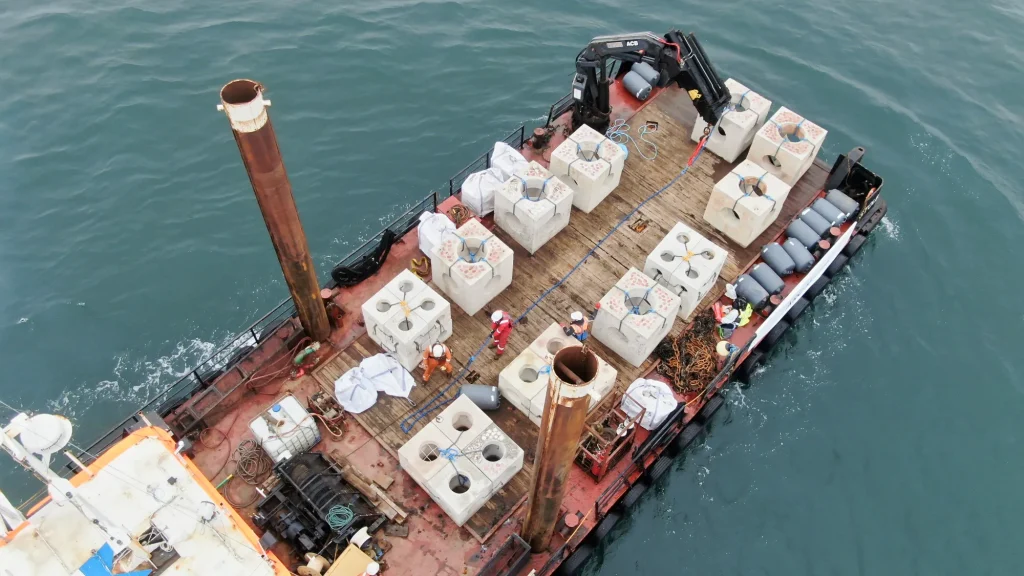
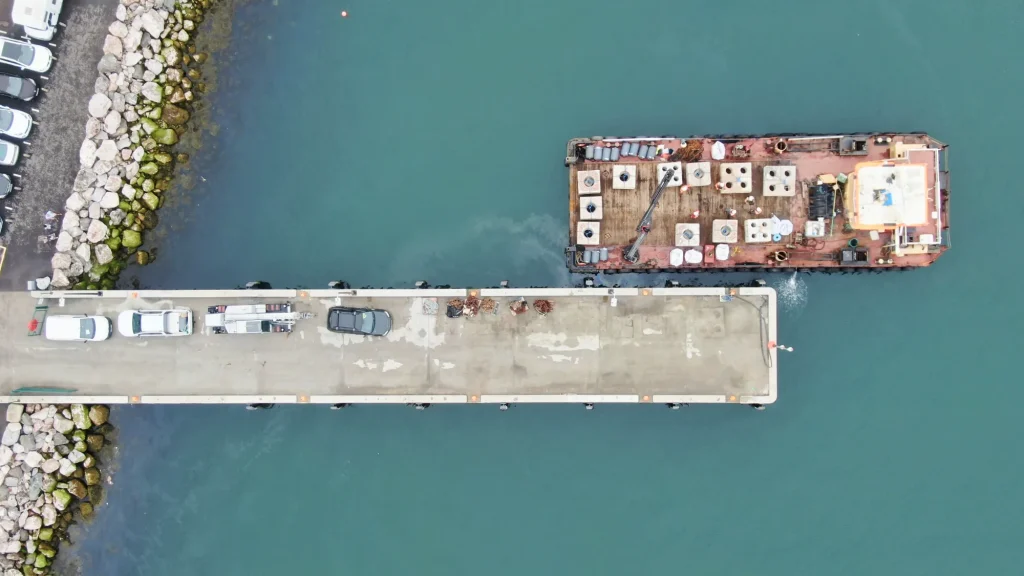
Solution
Reef cubes are modular habitat enhancement units that are low-carbon, plastic-free and made from 98% recycled materials. They’re built with a nature-inclusive design and contain a spherical chamber with passages on each of the cube faces. The cubes used in REFAS 2 offered a 91% reduction in CO2 emissions, but we have since finalised our mix to reach carbon-neutral status.
Since deployment, we recorded 108 species (and growing) amongst the artificial reefs which now provide habitat for a range of marine life. It was found that our Reef cubes had three times as many species in comparison with controls, and they had double the number of species around them.
There was a greater diversity at all taxonomic levels, both in and around the units and carnivores increased eightfold, whilst suspension feeders enhanced threefold. Species found at the reefs include filter feeders like the blue mussel and suspension feeders like feather stars, which are growing on top of the cubes. Additionally, a huge number of species like Poor Cod, Pouting, Cuttlefish and Squid have been found around them. With the eggs of Sharks, Cuttlefish and Squid found attached to the Reef cubes, it also appears that the complex habitat provided by the units is serving as a nursery to assist in the reproduction of a variety of species.
Our research has also found that there is a seasonal effect on species richness, with higher averages in the Autumn than in the Spring.
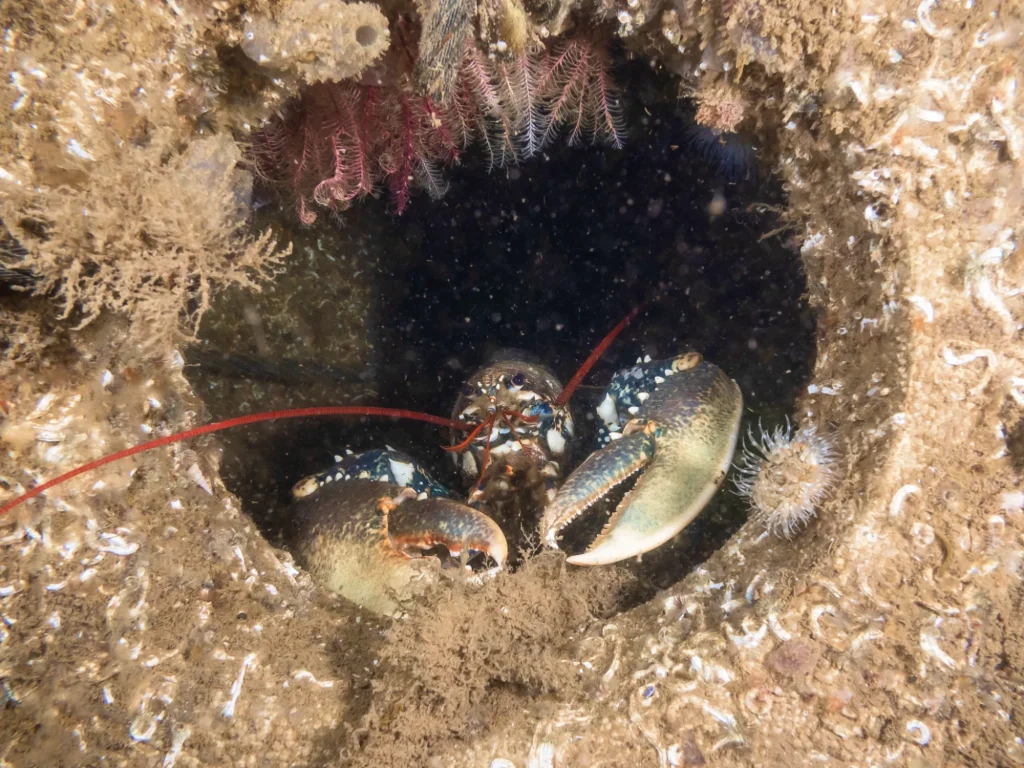
Published Papers & Resources
Full links and related documents can be found in our resources area.
More Projects
related content


